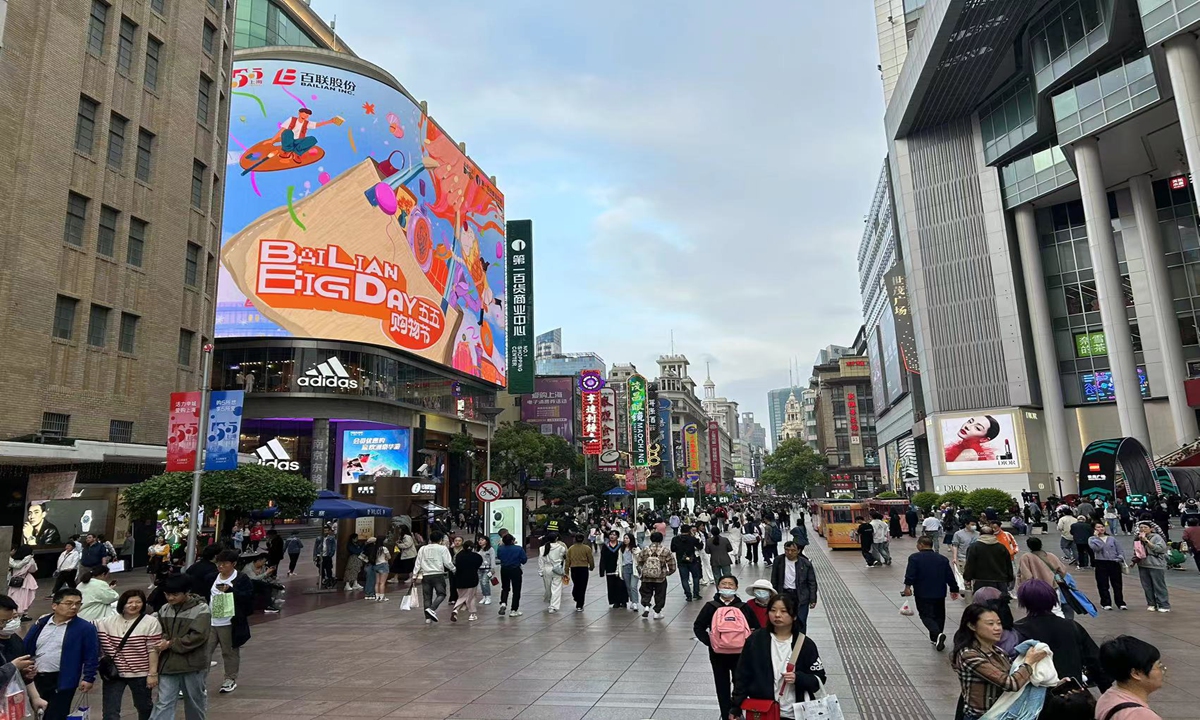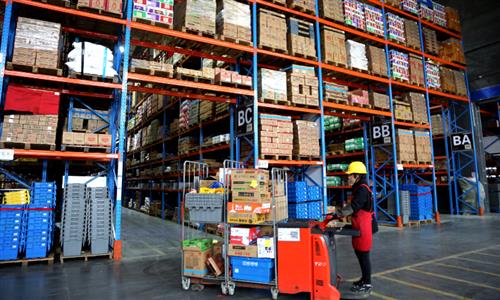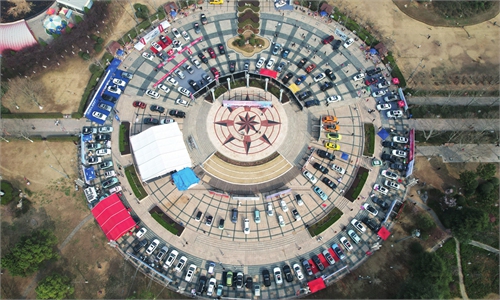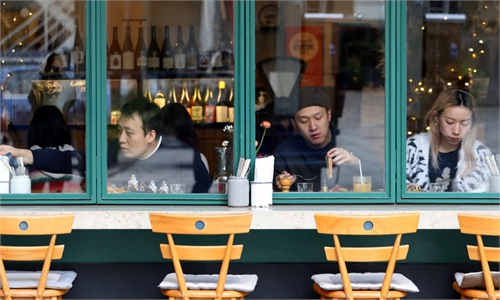
A shopping mall in downtown Shanghai displays the logo of the Shanghai 5.5 Shopping Festival to attract shoppers on April 27, 2024. Photo: Qi Xijia/GT
China's retail sales, an important reflection of consumer spending, beat analysts' forecasts to grow by 3.7 percent year-on-year in May. The encouraging figure underscores the resilience and dynamism of the world's second-largest economy, analysts said, forecasting an even more robust economic performance for the rest of the year amid targeted policies.
According to data released by the National Bureau of Statistics (NBS) on Monday, retail sales reached 3.92 trillion yuan ($540.42 billion) last month, up 3.7 percent year-on-year, compared with growth of 2.3 percent year-on-year in April.
In the first five months of the year, retail sales grew by 4.1 percent to 19.52 trillion yuan, and online retail sales jumped by 12.4 percent to 5.77 trillion yuan, according to the NBS.
"The continuous recovery of the consumption sector so far this year underscores China's advantage of having an ultra-large market, and it is also a result of the continuous recovery of the economy's internal growth momentum and the release of consumer spending potential," NBS spokesperson Liu Aihua said at a press briefing on Monday.
In May, sales of goods for upgraded spending posted fast growth. Among businesses above the designated size, retail sales of sports and recreational articles grew by 20.2 percent year-on-year, cosmetics rose by 18.7 percent, commercial telecommunications equipment grew by 16.6 percent, and home appliances and audio-video equipment jumped by 12.9 percent year-on-year, NBS data showed.
Zhou Maohua, an economist at China Everbright Bank, told the Global Times on Monday that the accelerated recovery in consumption was underpinned by improving employment and income data, stronger consumer confidence, and increased willingness to spend due to low consumer prices amid a low interest rate environment.
"The holiday travel surge and a relatively low base from 2023 also contributed to the increase," Zhou said.
About 295 million domestic tourist trips were made during the five-day May Day holidays, up 7.6 percent year-on-year and a surge of 28.2 percent from the same period in 2019.
It is important to actively expand domestic demand and implement the action plan for large-scale equipment renewals and trade-ins of consumer goods. It is also imperative to create more consumption scenarios to better meet people's needs for diversified and high-quality consumption, according to the meeting of the Political Bureau of the Communist Party of China Central Committee on April 30.
The better-than-expected retail figure in May revealed the strength, resilience and potential of the world's second-largest economy, which will generate growth both this year and in the longer term, Cao Heping, an economist at Peking University, told the Global Times on Monday.
As the pace of consumption potential picks up speed, the role of consumer spending as a main driver of China's economic recovery will be further strengthened, Cao said, noting that the vitality of new types of consumption and services will in turn boost the development of new quality productive forces.
The prolonged correction in the property market will constitute a drag on consumer spending, although the situation will gradually improve with the implementation of trade-in programs, more policies to support consumption and a further recovery in domestic demand, noted Zhou.
A continued recovery in consumption will further repair expectations, stimulate internal circulation and contribute to the realization of the full-year growth target, said Zhou.
Liu said that multiple positive factors will contribute to an accelerated recovery of the consumption sector. Recently, government agencies and provinces have implemented policies to expand domestic demand, especially specific measures to facilitate and encourage trade-ins of consumer goods, and this process will inject vitality into the market.
In addition, new types of consumption are growing rapidly and market supply continues to improve, Liu stated.



